


| MOQ: | 1kg |
| Price: | US $500/kg |
| Standard Packaging: | Cylinder/Tank |
| Delivery Period: | 30 days |
| Payment Method: | L/C, T/T |
| Supply Capacity: | 2000 Tons/Year |
Trichlorosilane (SiHCl3) is a chemical compound composed of one silicon atom bonded to three chlorine atoms and one hydrogen atom. It is a colorless, volatile liquid at room temperature. Here are some key points about trichlorosilane:
Chemical Composition: Trichlorosilane consists of one silicon (Si) atom bonded to three chlorine (Cl) atoms and one hydrogen (H) atom. Its chemical formula is SiHCl3.
Properties: Trichlorosilane is a volatile liquid with a boiling point of -23.66 degrees Celsius (-10.59 degrees Fahrenheit) and a melting point of -132.2 degrees Celsius (-206 degrees Fahrenheit). It has a pungent odor similar to hydrochloric acid.
Production: Trichlorosilane is primarily produced through the reaction of metallurgical-grade silicon (MG-Si) with hydrogen chloride (HCl):
Si + 3HCl → SiHCl3 + H2
This reaction typically takes place at high temperatures in the presence of a catalyst, such as copper.
Uses: Trichlorosilane is a key intermediate in the production of various silicon-based materials:
Silicon Production: Trichlorosilane is used as a precursor in the manufacturing of high-purity silicon, which is essential for the production of semiconductors and solar cells. It undergoes chemical vapor deposition (CVD) to deposit silicon onto a substrate, forming polycrystalline silicon or epitaxial silicon layers.
Silicones: Trichlorosilane is a starting material in the synthesis of silicones, which are widely used in applications such as lubricants, sealants, adhesives, and medical devices.
Silanes: It is also employed as a precursor in the production of various organosilicon compounds, including silanes. Silanes find applications as coupling agents, surface modifiers, and as intermediates in the production of functional materials.
Safety Considerations: Trichlorosilane is a flammable and reactive compound. It is toxic and can cause skin and eye irritation upon contact. Inhalation of its vapors or fumes can be harmful to the respiratory system. Proper safety precautions, such as the use of protective equipment and appropriate handling procedures, should be followed when working with trichlorosilane.
It's important to handle trichlorosilane with care and adhere to safety measures to mitigate potential risks associated with its flammability and reactivity.
Basic Info.
| Model NO. | SiHCl3 | Grade Standard | Electron Grade |
| Transport Package | Canister, Cylinder | Specification | 40L, 200L |
| Trademark | CMC | Origin | Suzhou |
| HS Code | 2812190091 | Production Capacity | 1000t/Year |
Trichlorosilane is a silicon precursor for epitaxial silicon-containing thin films, especially for the
preparation of starting wafers.
Specifications:
| Test items | Unit | Test Result | |
| Components | Purity | % | 99.990 |
| Other CHLOROSILANE | % | 0.010 | |
Impurities |
Co | ppb | 0.01 |
| Cr | ppb | 0.01 | |
| Cu | ppb | 0.01 | |
| Fe | ppb | 0.06 | |
| Mn | ppb | 0.01 | |
| Ni | ppb | 0.01 | |
| V | ppb | 0.01 | |
| B | ppb | 0.01 | |
| Al | ppb | 0.01 | |
| P | ppb | 0.01 | |
| As | ppb | 0.01 | |
| Mo | ppb | 0.01 | |
| Total metal impurities | ppb | <1.00 | |
| P+As | ppb | 0.02 | |
| C | ppm | <0.01 | |
| Gas Density | / | 4.7 | |
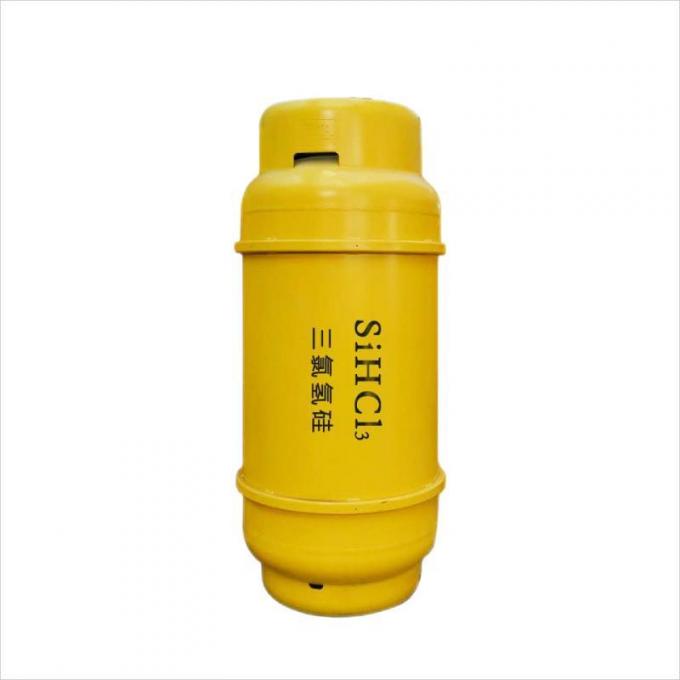
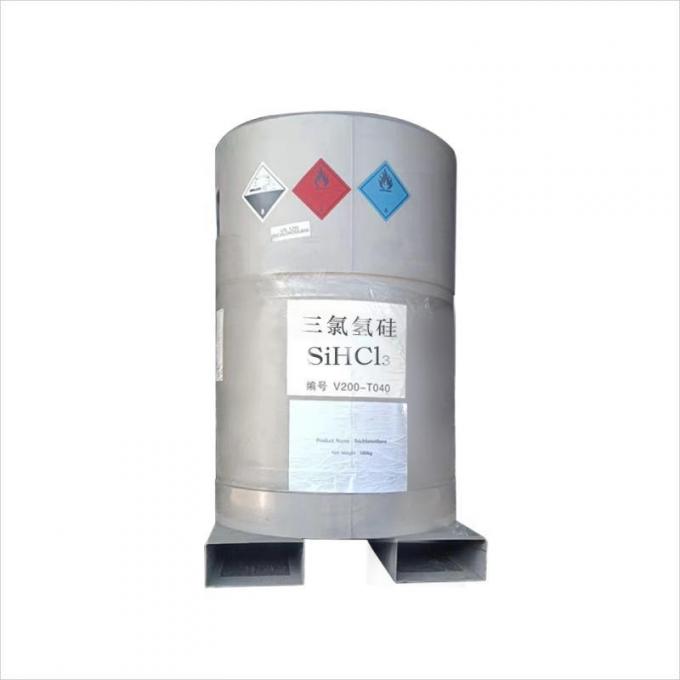
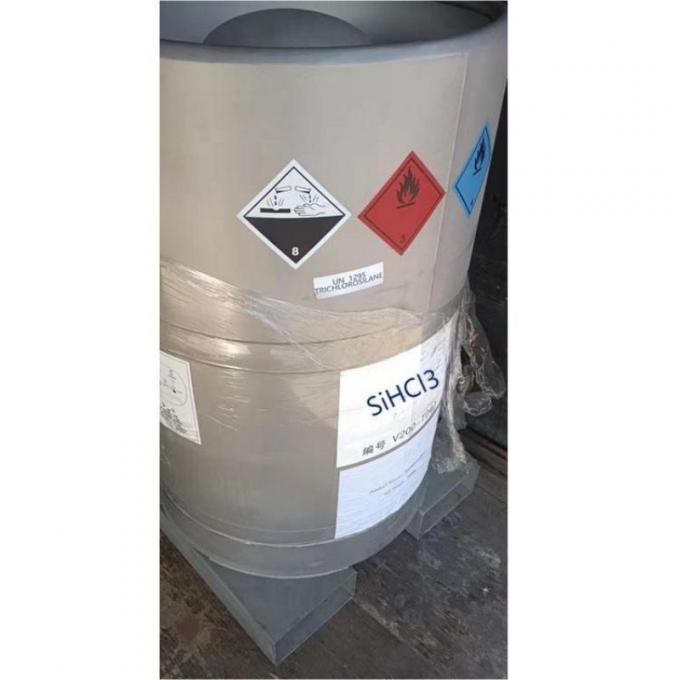
ShangHai CMC chemical Co.,ltd. is staffed by trained personnel, combine many years experience in Gas industry .We supply cylinder gas, electronic gas, etc ., and the gas holder, panel, valves and fittings and other equipment, parts and engineering services to our customers in China and worldwide; The products are involved in various industrial fields, such as semiconductor chip, solar cell, LED, TFT-LCD, optical fiber, glass, laser, medicine , etc., Our mission is to partner with our global customers to provide support, solutions and quality products that are innovative,reliable, and safe.
Our products mainly include: H2, O2, N2, Ar, CO2, propane, acetylene, helium, laser mixed gas, SiH4, Sih2cl2, SiHCL3, SiCL4, NH3, CF4, NF3, SF6, HCL, N2O, doping mixed gas (TMB, PH3, B2H6) and other electronic gases.
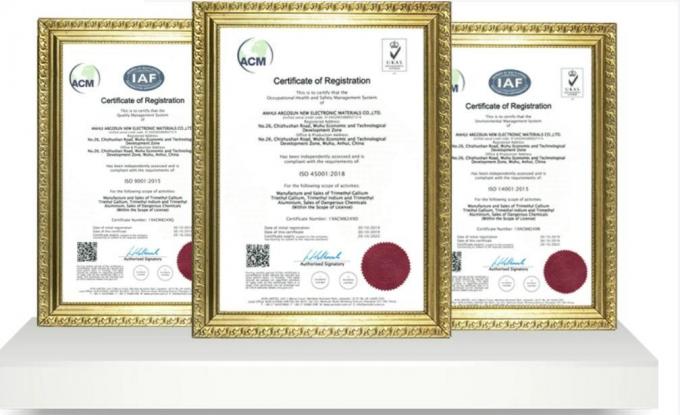

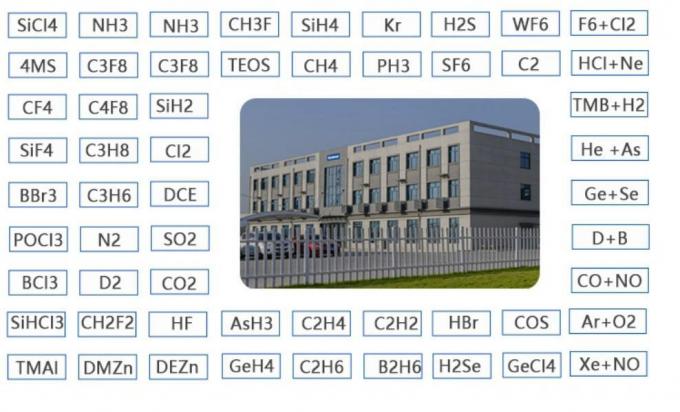

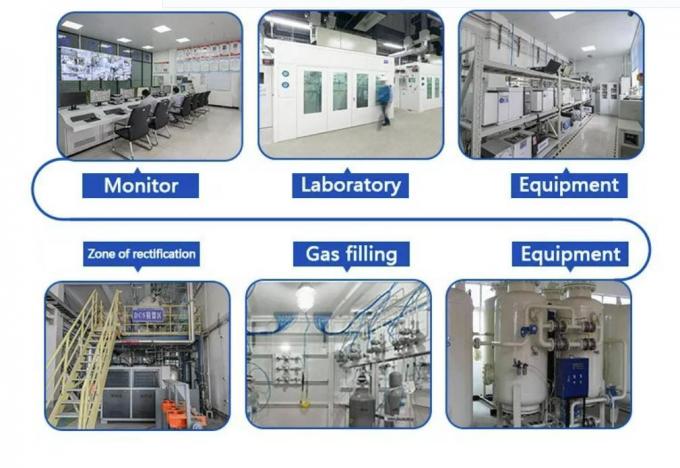
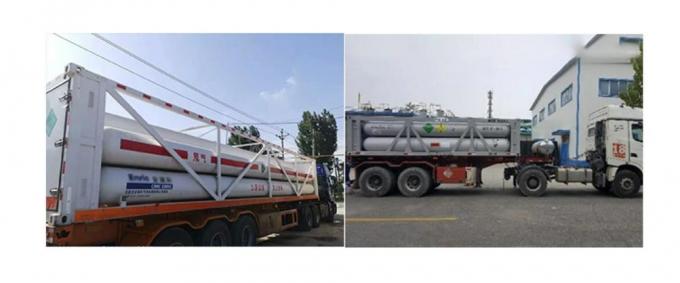

| MOQ: | 1kg |
| Price: | US $500/kg |
| Standard Packaging: | Cylinder/Tank |
| Delivery Period: | 30 days |
| Payment Method: | L/C, T/T |
| Supply Capacity: | 2000 Tons/Year |
Trichlorosilane (SiHCl3) is a chemical compound composed of one silicon atom bonded to three chlorine atoms and one hydrogen atom. It is a colorless, volatile liquid at room temperature. Here are some key points about trichlorosilane:
Chemical Composition: Trichlorosilane consists of one silicon (Si) atom bonded to three chlorine (Cl) atoms and one hydrogen (H) atom. Its chemical formula is SiHCl3.
Properties: Trichlorosilane is a volatile liquid with a boiling point of -23.66 degrees Celsius (-10.59 degrees Fahrenheit) and a melting point of -132.2 degrees Celsius (-206 degrees Fahrenheit). It has a pungent odor similar to hydrochloric acid.
Production: Trichlorosilane is primarily produced through the reaction of metallurgical-grade silicon (MG-Si) with hydrogen chloride (HCl):
Si + 3HCl → SiHCl3 + H2
This reaction typically takes place at high temperatures in the presence of a catalyst, such as copper.
Uses: Trichlorosilane is a key intermediate in the production of various silicon-based materials:
Silicon Production: Trichlorosilane is used as a precursor in the manufacturing of high-purity silicon, which is essential for the production of semiconductors and solar cells. It undergoes chemical vapor deposition (CVD) to deposit silicon onto a substrate, forming polycrystalline silicon or epitaxial silicon layers.
Silicones: Trichlorosilane is a starting material in the synthesis of silicones, which are widely used in applications such as lubricants, sealants, adhesives, and medical devices.
Silanes: It is also employed as a precursor in the production of various organosilicon compounds, including silanes. Silanes find applications as coupling agents, surface modifiers, and as intermediates in the production of functional materials.
Safety Considerations: Trichlorosilane is a flammable and reactive compound. It is toxic and can cause skin and eye irritation upon contact. Inhalation of its vapors or fumes can be harmful to the respiratory system. Proper safety precautions, such as the use of protective equipment and appropriate handling procedures, should be followed when working with trichlorosilane.
It's important to handle trichlorosilane with care and adhere to safety measures to mitigate potential risks associated with its flammability and reactivity.
Basic Info.
| Model NO. | SiHCl3 | Grade Standard | Electron Grade |
| Transport Package | Canister, Cylinder | Specification | 40L, 200L |
| Trademark | CMC | Origin | Suzhou |
| HS Code | 2812190091 | Production Capacity | 1000t/Year |
Trichlorosilane is a silicon precursor for epitaxial silicon-containing thin films, especially for the
preparation of starting wafers.
Specifications:
| Test items | Unit | Test Result | |
| Components | Purity | % | 99.990 |
| Other CHLOROSILANE | % | 0.010 | |
Impurities |
Co | ppb | 0.01 |
| Cr | ppb | 0.01 | |
| Cu | ppb | 0.01 | |
| Fe | ppb | 0.06 | |
| Mn | ppb | 0.01 | |
| Ni | ppb | 0.01 | |
| V | ppb | 0.01 | |
| B | ppb | 0.01 | |
| Al | ppb | 0.01 | |
| P | ppb | 0.01 | |
| As | ppb | 0.01 | |
| Mo | ppb | 0.01 | |
| Total metal impurities | ppb | <1.00 | |
| P+As | ppb | 0.02 | |
| C | ppm | <0.01 | |
| Gas Density | / | 4.7 | |



ShangHai CMC chemical Co.,ltd. is staffed by trained personnel, combine many years experience in Gas industry .We supply cylinder gas, electronic gas, etc ., and the gas holder, panel, valves and fittings and other equipment, parts and engineering services to our customers in China and worldwide; The products are involved in various industrial fields, such as semiconductor chip, solar cell, LED, TFT-LCD, optical fiber, glass, laser, medicine , etc., Our mission is to partner with our global customers to provide support, solutions and quality products that are innovative,reliable, and safe.
Our products mainly include: H2, O2, N2, Ar, CO2, propane, acetylene, helium, laser mixed gas, SiH4, Sih2cl2, SiHCL3, SiCL4, NH3, CF4, NF3, SF6, HCL, N2O, doping mixed gas (TMB, PH3, B2H6) and other electronic gases.





